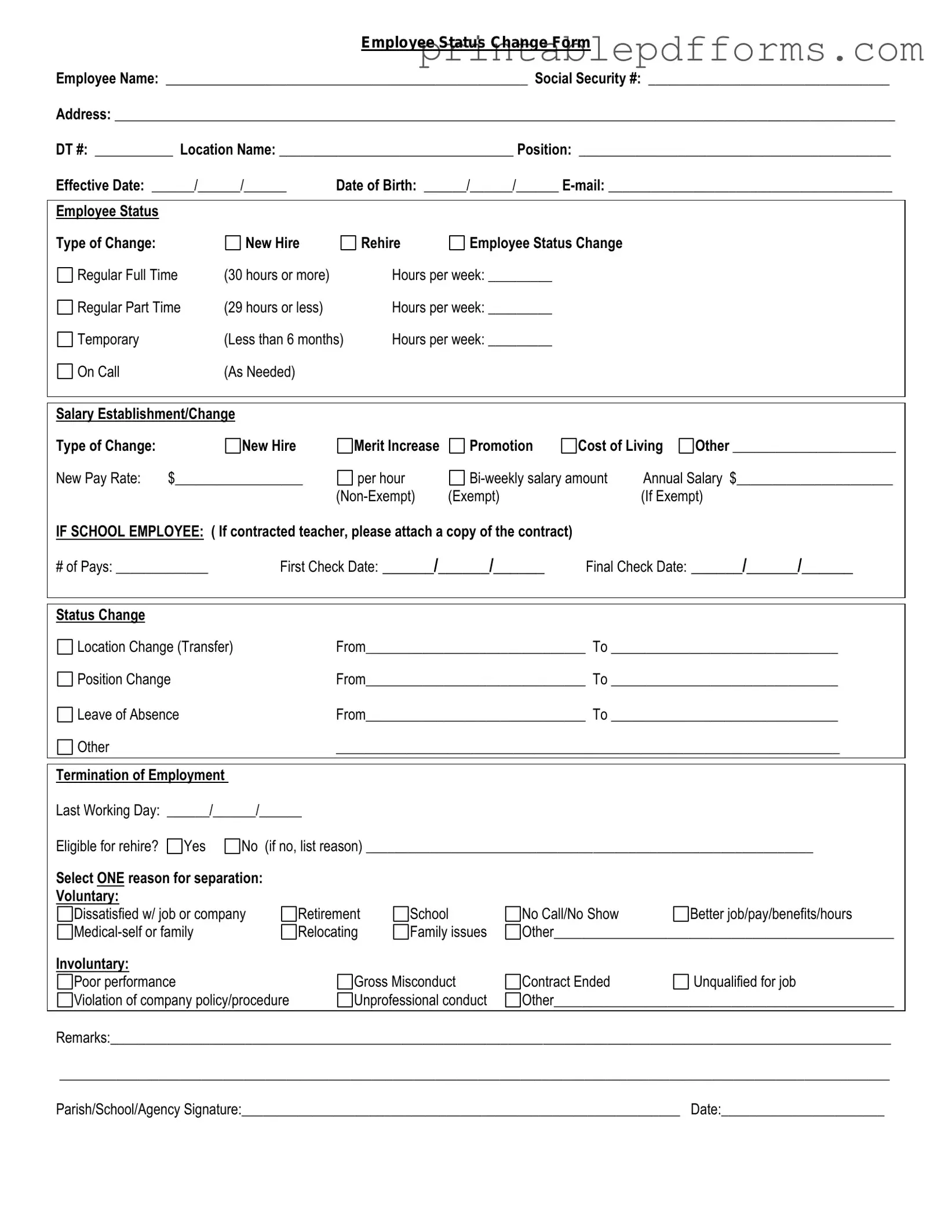The Employee Status Change form is a document used to officially record changes in an employee's status within a company. This may include changes such as promotions, demotions, transfers, or terminations. The form ensures that all relevant information is documented and processed appropriately.
The form must be completed by the employee's supervisor or manager. In some cases, HR personnel may also assist in filling out the form to ensure accuracy. Employees themselves may need to provide input or sign the form, depending on the nature of the status change.
The form should be submitted as soon as a status change is decided. Timely submission helps to ensure that payroll and benefits are updated without delay. For promotions or transfers, it is best to submit the form before the effective date of the change.
The form typically requires the following information:
-
Employee's name and identification number
-
Current job title and department
-
New job title and department (if applicable)
-
Effective date of the change
-
Reason for the status change
-
Signature of the supervisor or manager
Once submitted, the form is reviewed by the HR department. They will process the changes in the company's records, payroll, and benefits systems. Employees will be notified if any additional information or action is required on their part.
Many companies allow the Employee Status Change form to be submitted electronically. Check with your HR department for specific procedures. If electronic submission is not an option, a hard copy of the form should be printed and submitted in person or via mail.
If a mistake is made on the form, it is important to correct it promptly. Cross out the error, write the correct information, and initial the change. Alternatively, a new form can be filled out if the error is significant. Always ensure that the most accurate information is submitted.
The Employee Status Change form can typically be obtained from the HR department or the company’s internal website. If you are unable to locate the form, reach out to your HR representative for assistance.

